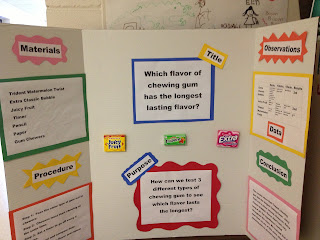Why Do a Science Fair Project?
There are many benefits to participating in science fair projects. Now you may be doing a science fair project because it's an assignment, it's a school expectation, or you may get the opportunity to do a project by choice. Either way, it may motivate your students to know and understand the scientific method and it can be FUN!
Your students may discover something amazing! Real research is done for science fairs, sometimes resulting in important inventions and discoveries. Even if your project isn't earth-shattering, you'll almost certainly learn something you didn't know before you started.
Students will become better at science. However, they will also become more confident, more mature, more disciplined, and more skilled.
Scientific Method:
To support our 5th grade students who were required to complete a project, each class did their own science fair project! All the classes did a WONDERFUL job on their projects....here are some examples:

















































